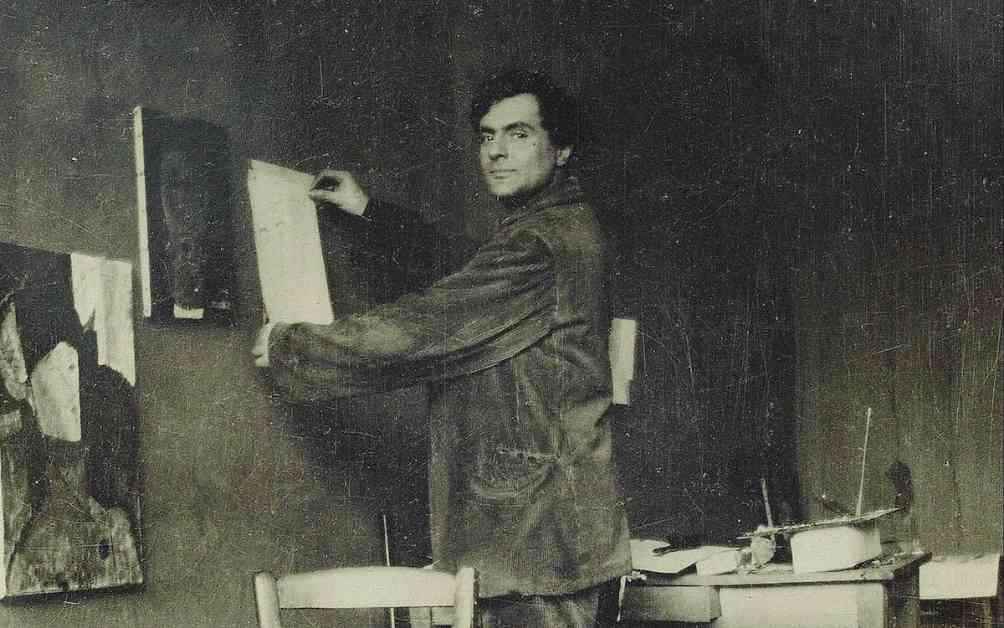Rare Modigliani Painting Discovered, Collector Removes Sculpture: Morning Art News
A striking discovery in the world of art has recently come to light, capturing the attention of enthusiasts and experts alike. A portrait that was acquired at an antique market in France approximately 15 years ago has been identified as an early painting by the renowned artist Amedeo Modigliani. Italian collector Paolo Guzzini stumbled upon this remarkable piece when he noticed a peculiar seal on the back of an expressive oil painting of a man. Intrigued by this find, Guzzini decided to invest a few thousand euros in the artwork.
The seal indicated that the canvas originated from a shop that supplied artists in Montmartre during the early 1900s, providing a tantalizing clue to its mysterious origins. However, the identity of the artist behind the painting remained elusive. Undeterred, Guzzini sought the expertise of the Fondazione Amedeo Modigliani in Rome, which conducted further analysis on the piece. Through X-rays and meticulous examination, they were able to identify the sitter in the painting as a certain Mario Cavalieri, a close associate of Modigliani.
The conclusive findings revealed that this portrait was undeniably one of Modigliani’s early works, created in 1906 shortly after his arrival in Paris. The significance of this discovery extends beyond its monetary value, as Guzzini eloquently stated, “The value of this artwork today is not only in its market price, but especially in its historic importance.” This revelation sheds new light on the early artistic endeavors of a masterful painter, adding a layer of depth and intrigue to his storied career.
Decoding Documenta
Moving beyond the realm of individual art discoveries, the prestigious art show Documenta has recently implemented a new code of conduct following a turbulent period marked by an antisemitism scandal during its 2022 edition. The revised guidelines aim to address and oppose all forms of antisemitism, racism, and group-related misanthropy, aligning with internationally recognized definitions of discrimination and prejudice. However, the adoption of the International Holocaust Remembrance Alliance (IHRA) definition of antisemitism has sparked debates and criticisms, particularly surrounding its implications for free speech and political discourse.
The complexities surrounding the IHRA definition have fueled discussions within the art world, with differing opinions on its utility and implications. While some argue that it serves as a necessary safeguard against hate speech and discrimination, others contend that it may inadvertently suppress legitimate criticism and dissent. The nuanced nature of this debate underscores the challenges inherent in navigating sensitive issues of identity, representation, and historical memory within the art community.
The Kicker: Guadalajara’s Thriving Art Scene
Amidst these intriguing revelations and debates in the art world, a burgeoning artistic hub in Guadalajara, Mexico, is making waves with its vibrant cultural scene. While Mexico City’s Zona Maco art fair attracts global attention, Guadalajara’s ART WKND GDL has emerged as a dynamic and engaging platform for local artists and art enthusiasts. Elisa Carollo’s insightful exploration of this burgeoning art scene highlights the fusion of international influences with local traditions, creating a rich tapestry of creativity and innovation.
The artistic energy and creative spirit that permeate Guadalajara’s art community offer a compelling counterpoint to the established art capitals of the world. By embracing diverse perspectives and fostering a collaborative environment, this thriving city is redefining the boundaries of contemporary art and reinventing the cultural landscape. As Carollo aptly observes, these localized pockets of creativity provide a refreshing and immersive experience that transcends the confines of traditional art scenes, offering a glimpse into the evolving nature of artistic expression and cultural exchange.












